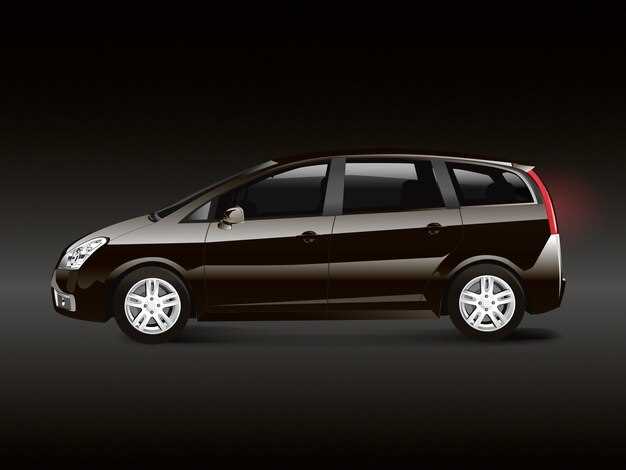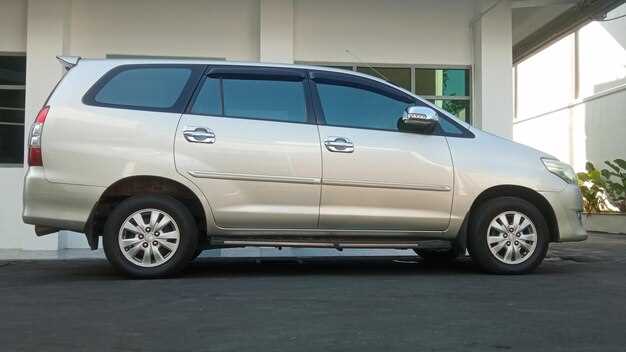
In the ever-evolving world of family transportation, minivans have maintained their popularity due to their spacious interiors and versatile features. Among the top contenders in this segment are the Toyota Sienna and the Chrysler Pacifica. Both models offer a blend of comfort, technology, and safety, making them ideal choices for families on the go.
Each minivan presents its unique strengths, and understanding these differences can help potential buyers make an informed decision. The Sienna, known for its reliability and fuel efficiency, operates exclusively on a hybrid powertrain, setting it apart in a market still dominated by gasoline engines. On the other hand, the Pacifica offers a compelling mix of performance options, including a plug-in hybrid variant that appeals to eco-conscious consumers.
As we delve into a detailed comparison of the Toyota Sienna and Chrysler Pacifica, we will examine essential aspects such as interior space, technology features, safety ratings, and overall value. By analyzing these key factors, we aim to provide potential buyers with a comprehensive perspective on which minivan better meets their family’s needs.
Fuel Efficiency: Comparing Sienna’s Hybrid System to Pacifica’s Gasoline Engine
When evaluating fuel efficiency, the Toyota Sienna stands out due to its exclusive hybrid powertrain, which significantly enhances its miles per gallon (MPG) ratings. The Sienna achieves an impressive EPA-estimated 36 MPG combined, making it one of the most fuel-efficient minivans on the market. This hybrid system not only reduces fuel consumption but also lowers emissions, appealing to environmentally conscious consumers.
In contrast, the Chrysler Pacifica is equipped with a traditional gasoline engine, which typically offers lower MPG ratings. The gasoline variant of the Pacifica averages around 22 MPG combined, which is considerably less efficient compared to the hybrid Sienna. While the Pacifica does provide a powerful performance and is available with a plug-in hybrid option, its conventional engine still falls short in overall fuel economy when compared to the Sienna’s dedicated hybrid configuration.
The hybrid system in the Sienna also contributes to a quieter ride, as it utilizes electric power at lower speeds, reducing both fuel usage and engine noise. This feature enhances the driving experience, especially in urban settings where stop-and-go traffic is common. On the other hand, the Pacifica’s gasoline engine tends to be more vocal under acceleration, which may be a consideration for families seeking a tranquil cabin environment.
Ultimately, for those prioritizing fuel efficiency, the Toyota Sienna’s hybrid system offers a compelling advantage over the Chrysler Pacifica’s gasoline engine. The combination of higher MPG ratings and reduced emissions positions the Sienna as a more sustainable choice in the minivan segment.
Interior Space and Comfort: Evaluating Seating and Cargo Capacity in Sienna and Pacifica

The Toyota Sienna and Chrysler Pacifica both cater to families seeking spacious interiors and comfort, yet they approach these essentials differently. Analyzing seating arrangements and cargo capacity is crucial for potential buyers looking to maximize utility while ensuring comfort for all passengers.
Starting with the Sienna, it boasts a flexible seating configuration that accommodates up to eight passengers. The interior design emphasizes spaciousness, with ample headroom and legroom in all three rows. The second-row seats can slide and recline, facilitating easier access to the rear rows while enhancing passenger comfort. Additionally, the Sienna‘s seating materials are designed to provide a plush experience, with options for premium upholstery in higher trims.
On the other hand, the Pacifica also offers seating for up to eight passengers, but it stands out with its innovative Stow ‘n Go seating system. This feature allows the second-row seats to fold into the floor, creating a flat load surface for cargo when needed. The Pacifica’s interior is also well-appointed, with high-quality materials and a focus on sound insulation, ensuring a quiet ride. Legroom in the Pacifica is particularly generous, especially in the first two rows, making it a comfortable option for longer journeys.
When considering cargo capacity, the Sienna includes around 101 cubic feet of cargo space with the rear seats folded down, which is competitive in its class. Furthermore, there are numerous compartments and storage solutions throughout the vehicle, designed to keep the interior organized and tidy.
The Pacifica excels with a maximum cargo volume of up to 140.5 cubic feet when the rear seats are stowed. This versatility makes the Pacifica particularly appealing for those who prioritize storage for groceries, sports equipment, or other bulky items. Additionally, the Pacifica offers several interior storage bins and cup holders to enhance convenience during daily use.
Ultimately, both the Sienna and Pacifica offer excellent interior space and comfort, catering to diverse needs. While the Sienna emphasizes seating flexibility and high passenger comfort, the Pacifica shines with superior cargo capacity and innovative storage solutions. Prospective buyers should consider their specific lifestyle needs when choosing between these two capable minivans.
Safety Features: Analyzing the Advanced Safety Technology in Sienna Versus Pacifica

When it comes to family vehicles, safety is a paramount concern. The Toyota Sienna and Chrysler Pacifica both offer an array of advanced safety features designed to protect passengers and enhance overall driving confidence.
The Sienna comes equipped with Toyota’s Safety Sense suite, which includes technologies such as Pre-Collision System, Lane Departure Alert, and Adaptive Cruise Control. These features work collectively to minimize crash risk and help the driver maintain safety on the road. The Sienna also offers Blind Spot Monitoring and Rear Cross-Traffic Alert, essential for navigating tight spaces and busy parking lots.
On the other hand, the Chrysler Pacifica boasts its own impressive safety features, including the SafetyTec package, which includes similar technology such as Adaptive Cruise Control and ParkSense Rear Park Assist. The Pacifica also comes with 360-Degree Surround View Camera, providing drivers with a comprehensive view of their surroundings, which is particularly beneficial for families frequently on the go.
Another noteworthy aspect of the Pacifica is its availability of advanced features like Automatic Emergency Braking and Pedestrian Detection, which add an extra layer of protection. This technology alerts the driver of impending hazards and can even apply the brakes autonomously in critical situations.
In terms of crash test ratings, both the Sienna and Pacifica consistently receive high marks from safety organizations. Their structural integrity, coupled with a comprehensive suite of airbags, ensures robust protection in the event of a collision.
In summary, while both the Toyota Sienna and Chrysler Pacifica are equipped with advanced safety technologies designed to protect both drivers and passengers, each model presents unique features that cater to different family needs. The decision may ultimately come down to personal preference regarding the specific safety features that resonate most with the buyer.
